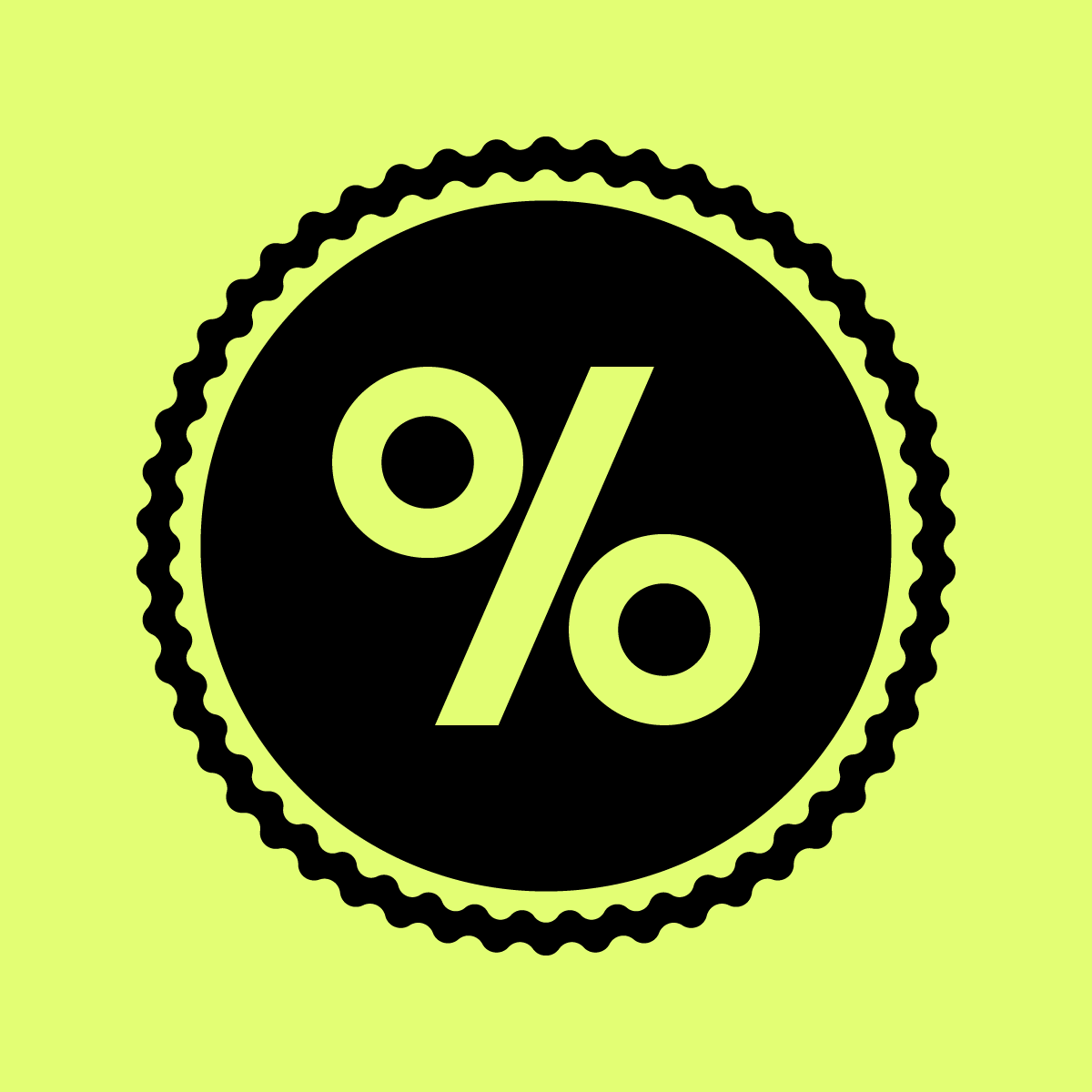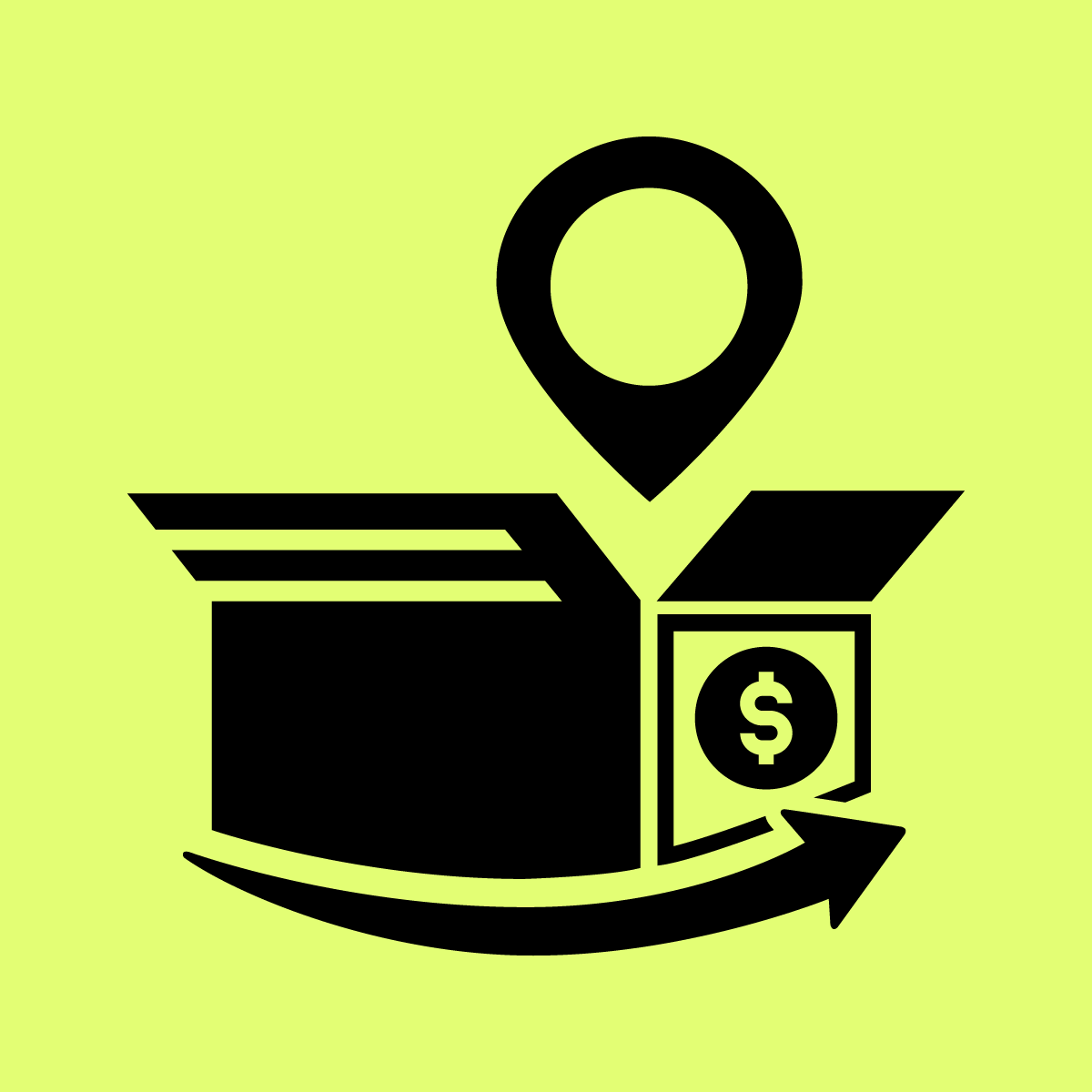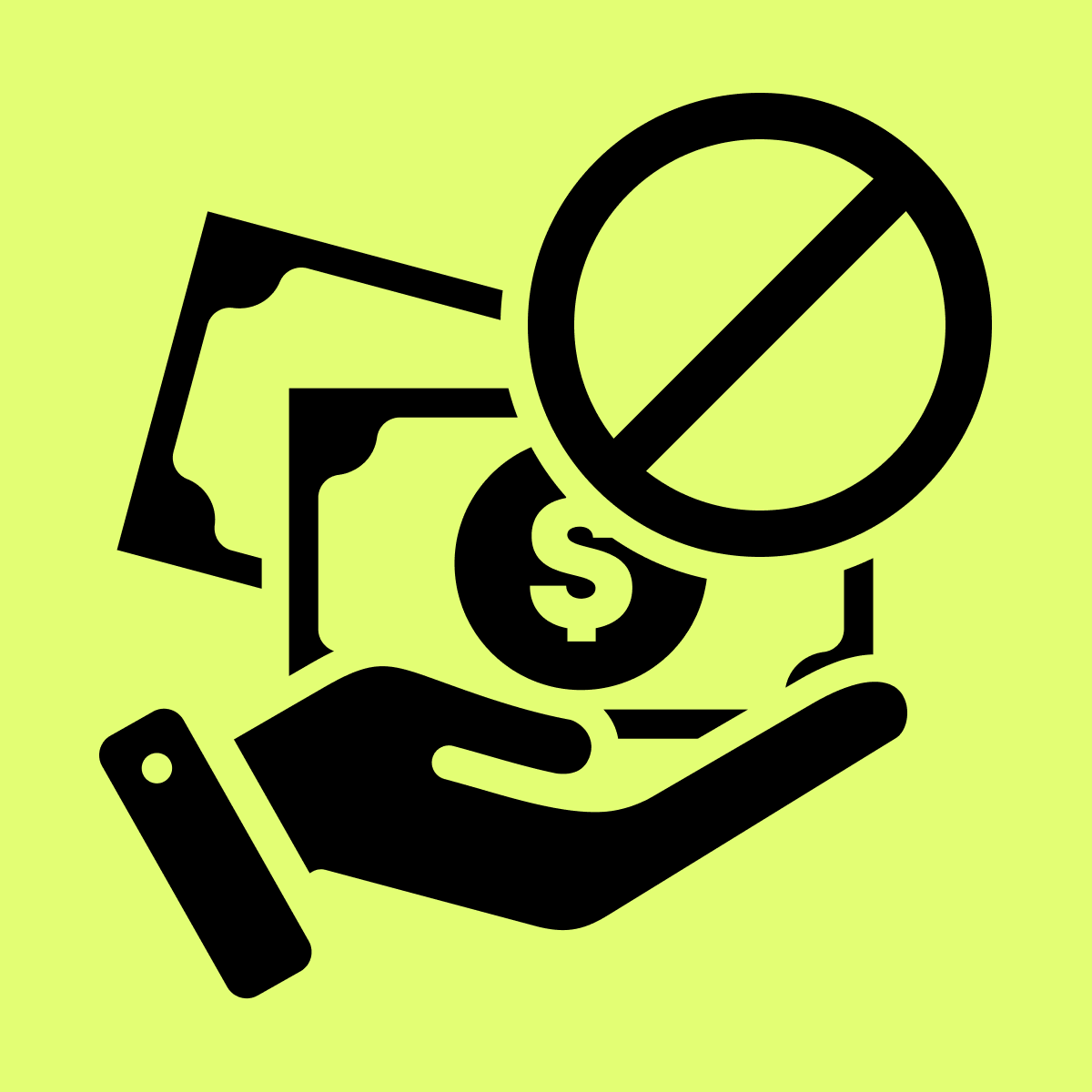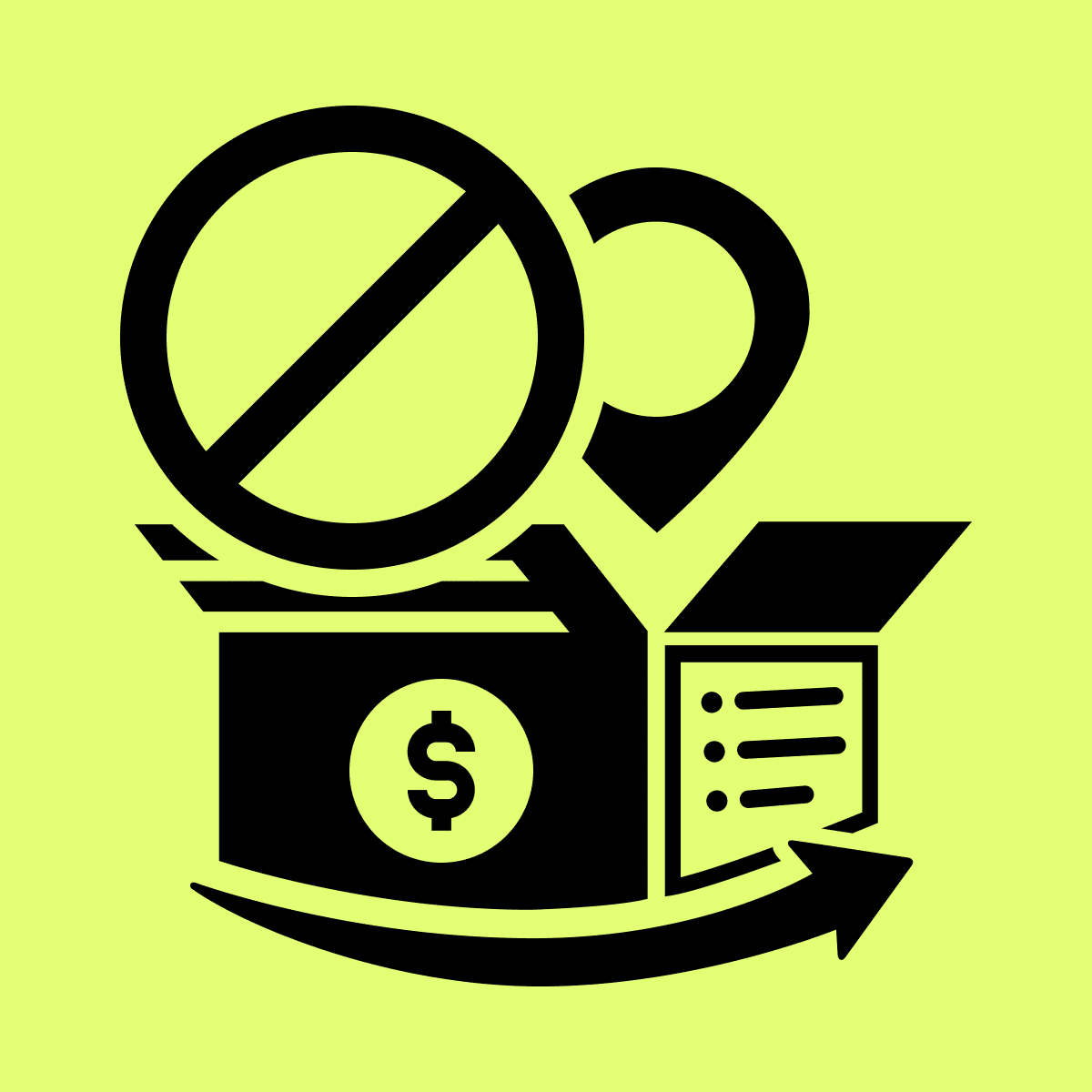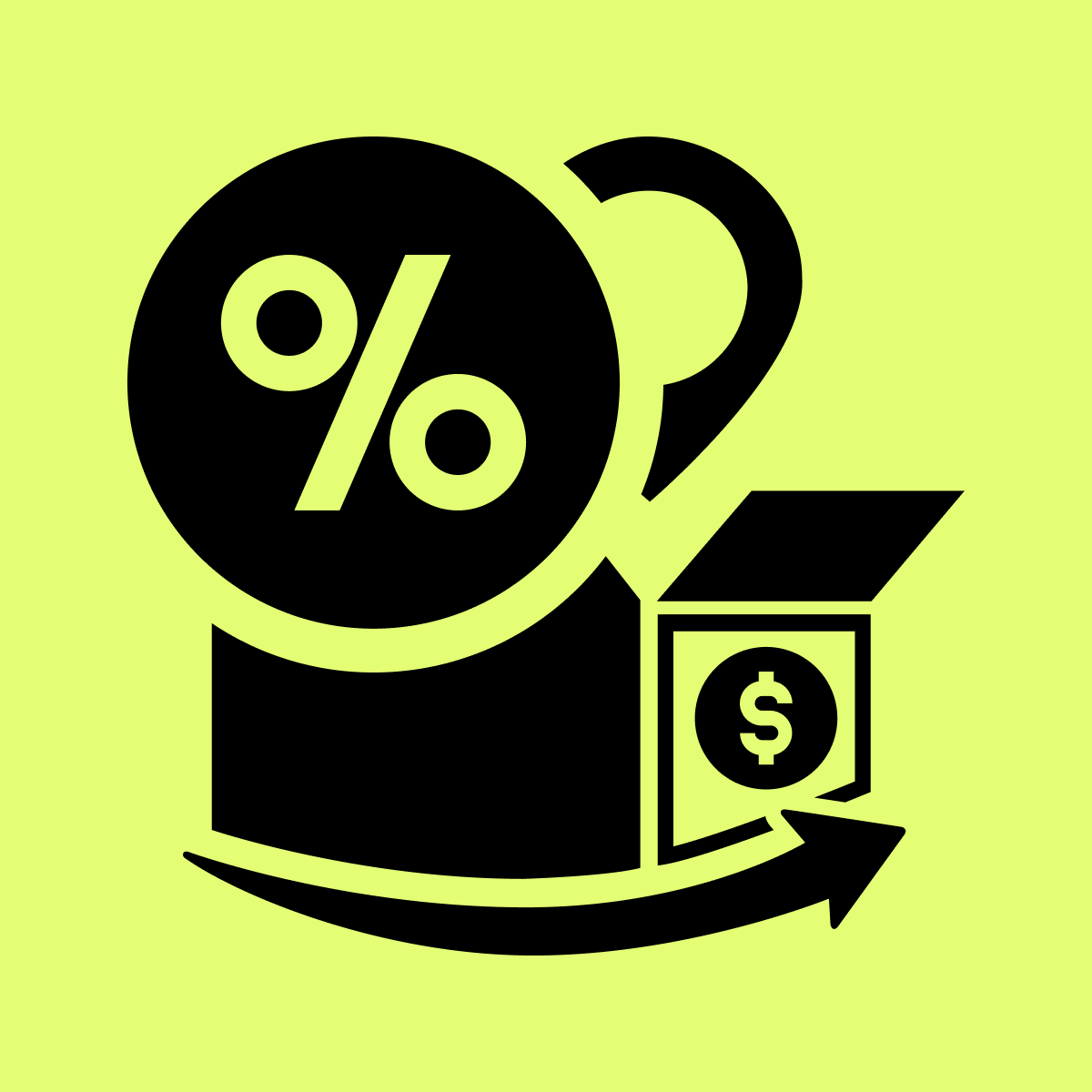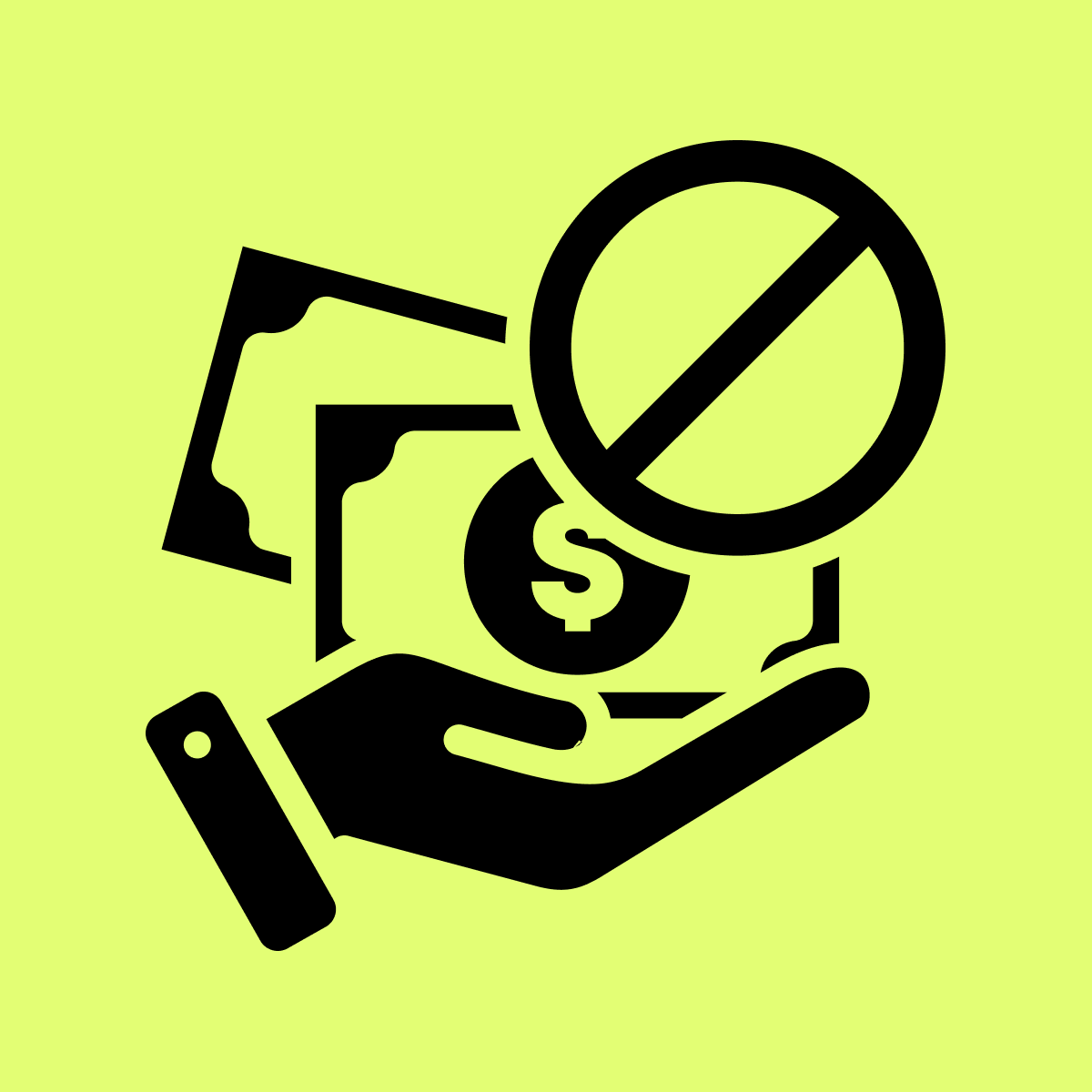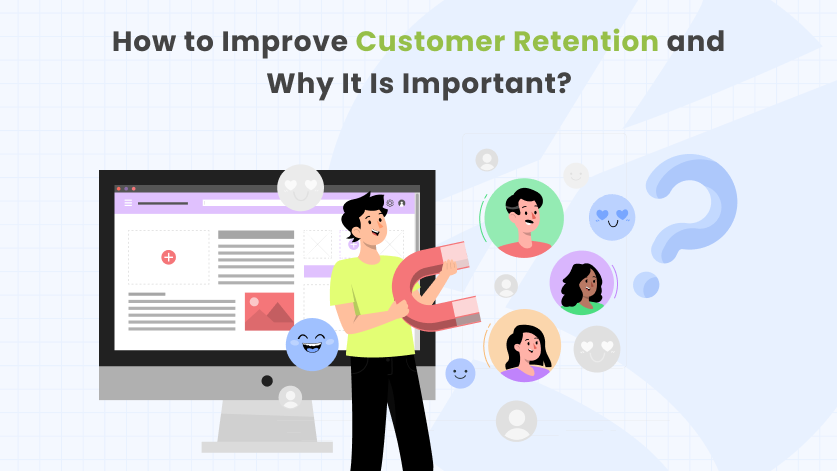In today’s fast-paced and highly competitive world, the key is to improve customer retention for business growth.
Improving customer retention and loyalty are important parts of a successful business. Not only do they improve your bottom line, but they also strengthen your brand reputation and build a loyal customer base that can sustain your business for years to come.
In this digital age, where many options are available on the market, consumers hold more power than ever. They can easily switch between brands, explore more options, and voice their opinion online, making it important for business owners to improve customer retention.
Acquiring new customers in today’s competitive market can be an expensive and frustrating task. But what if a study shows that focusing on retaining existing customers can increase profits by 25%?
The data-backed insights shared in this guide will not only show the importance of customer retention but also provide you with actionable strategies to keep your customers returning over time.
But, before we get started with strategies, metrics, and techniques to improve customer retention, let’s start with the foundation: understanding what customer retention really means and why it’s so important to your business growth. So, whether you’re a startup or a well-established business, this guide is for you.
Before we get started with customer retention, do you know the success rate of the Shopify store?
Before we get started with customer retention, do you know the success rate of the Shopify store?
Don’t worry, here is the answer.
The Shopify success rate of eCommerce stores is around 5% to 10%. This means that out of every 100 businesses that use Shopify, only about 5 to 10 of them are successful.
Here is a complete, detailed guide on the Shopify success rate.
What is Customer Retention?
Customer retention is the ability of an eCommerce business to retain its customers over a period of time and is a key metric of business success due to the high cost of acquiring new customers compared to retaining existing customers.
According to a study by Bain & Company, a 5% increase in customer retention can result in a substantial 25% boost in profits.
Customer retention can be measured in a number of ways, but the most common metric is the customer churn rate. This represents the percentage of customers who discontinue their engagement with a business within a specified period of time; a lower churn rate indicates effective customer retention efforts.
The advantages of customer retention extend beyond cost savings. Repeat customers tend to spend more with a business, and they also become valuable advocates, referring friends and family, ultimately increasing sales and profitability for the business.
Why Customer Retention is Important?
Customer retention is essential for businesses because it builds customer loyalty which can lead to increased sales, reduced costs, and a better brand reputation.
Loyal customers are more likely to make repeat purchases, spend more money with the company, and recommend it to others. This can help businesses grow their revenue and reduce their customer acquisition costs. Additionally, a strong brand reputation can attract new customers and make it easier to retain existing ones.
According to the Harvard Business Review, customer retention is a cost-effective strategy because acquiring a new customer can be 5 to 25 times more expensive than retaining an existing customer, which can significantly increase customer lifetime value (CLV).
With a loyal customer base, you don’t need to spend more on marketing, advertising, or aggressive sales outreach. Their trust in your brand from previous interactions makes them more likely to return and make repeat purchases.
So, the next time you wonder why customer retention strategies matter, remember the cost savings, the word-of-mouth marketing, and the improved bottom line it brings to your business.
When to Focus on Customer Retention?
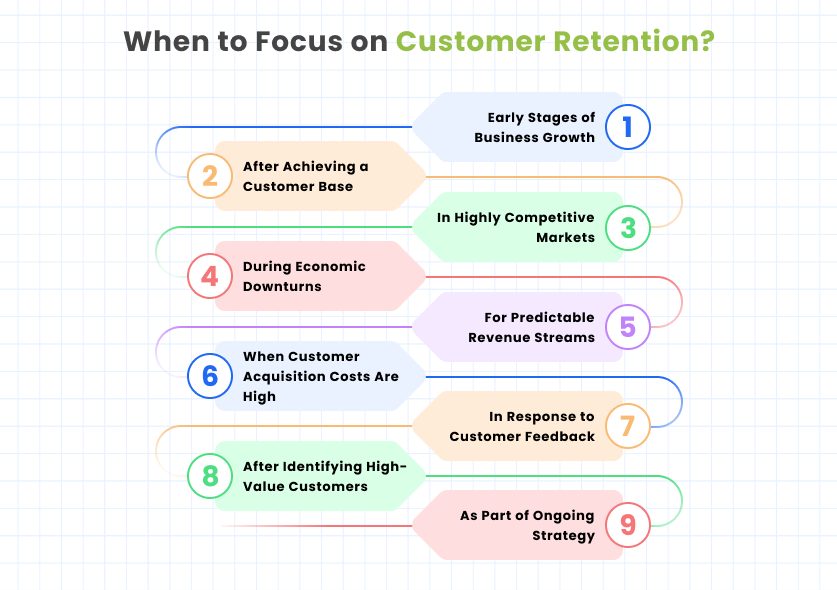
Focusing on customer retention is a strategic decision that should be made with careful consideration of various factors.
Focusing on customer retention is a strategic decision that should be made with careful consideration of various factors.
Here are the details on when to focus on customer retention:
1. Early Stages of Business Growth:
In the initial phases of business growth, the primary focus is often on customer acquisition. This is especially true for startups and new ventures aiming to establish their presence in the market.
While acquiring new customers is essential, it’s also an opportune time to lay the groundwork for customer retention. Building strong customer relationships from the outset can lead to long-term loyalty.
2. After Achieving a Customer Base:
Once a business has successfully acquired a customer base, it’s prudent to shift some attention toward customer retention. It’s a critical juncture when you want to retain these customers and transform them into loyal customers.
At this point, you’ve already invested resources in acquiring them, so focusing on retaining them becomes a cost-effective strategy.
3. In Highly Competitive Markets:
Customer retention becomes paramount in markets with fierce competition. When customers have numerous alternatives to choose from, the ability to retain them can be the key to maintaining or expanding market share.
It’s a means of creating a barrier against competitors, as satisfied and loyal customers are less likely to explore other options.
4. During Economic Downturns:
Economic downturns or recessions can pose challenges for businesses. In such times, customer retention takes on added significance. Loyal customers are more likely to continue supporting your business even in tough economic conditions.
Therefore, strengthening existing customer relationships can provide a degree of financial stability during economic uncertainties.
5. For Predictable Revenue Streams:
If your business relies on a consistent and predictable revenue stream, customer retention should be a continuous focus. Industries such as subscription-based services, SaaS (software as a service), and membership-based organizations thrive on customer retention.
Ensuring customers stay engaged and renew their subscriptions is essential for maintaining revenue stability.
6. When Customer Acquisition Costs are High:
In cases where customer acquisition costs are high, such as in highly competitive or niche markets, it becomes imperative to prioritize customer retention.
Retaining existing customers is usually more cost-efficient than constantly investing in acquiring new ones.
Redirecting resources towards nurturing current customer relationships can yield better returns on investment.
7. In Response to Customer Feedback:
Customer feedback is a valuable indicator of when to focus on retention. If you notice signs of dissatisfaction or customers expressing their desire for improved experiences, it’s a clear signal to invest in retention efforts.
Addressing their concerns promptly and making improvements demonstrates your commitment to their satisfaction.
8. After Identifying High-Value Customers:
Analyzing your customer base may reveal that a portion of your customers contribute significantly to your revenue (high-value customers).
Prioritizing efforts to retain and further engage these high-value customers can have a substantial impact on your bottom line.
9. As Part of an Ongoing Strategy:
Ideally, customer retention should be an integral part of your long-term business strategy. Consistently nurturing customer relationships, providing exceptional service, and adapting to changing customer needs should be ongoing practices rather than sporadic efforts.
In summary, focusing on customer retention is not a one-size-fits-all decision. It depends on your business stage, market competitiveness, economic conditions, acquisition costs, and customer feedback.
However, integrating customer retention into your overall business strategy, regardless of the circumstances, is a proactive approach that can lead to sustained growth and success.
Key Metrics to Improve Customer Retention:
It’s essential to monitor a number of critical variables in order to measure and improve customer retention. These metrics provide insightful information about your client interactions and direct your tactics.
Here are crucial measures for measuring customer retention, along with their calculations and explanations:
1. Customer Retention Rate (CRR):
Formula: [(E-N) / S] x 100, where S is the number of customers at the beginning of the period, E is the number of customers at the end of the period, and N is the number of new customers added during the period.
CRR shows the proportion of your current customers who were retained during a given time period. Your CRR would be 90%, for instance, if you started with 100 clients, added 20 more, and ended up with 110.
2. Customer Churn Rate (CCR):
Formula: (C / S) x 100, where C stands for the number of consumers lost during the course of a period and S stands for the total number of customers at the beginning of the period.
The customer churn rate (CCR) calculates the proportion of customers lost over a certain time period. Your CCR would be 10% if you started with 100 clients, lost 10, and ended up with 90.
3. Customer Lifetime Value (CLV):
Formula: Average Customer Lifespan x (Average Purchase Value x Average Purchase Frequency)
Customer lifetime value (CLV) calculates the entire value a client is anticipated to contribute to your company over the course of their relationship with you. Their CLV would be $1,000; for example, if their average purchase value was $50, they made four purchases from you each year, and they remained loyal to your brand for five years.
4. Repeat Customer Rate:
Formula: 100 times the ratio of repeat customers to all customers.
This indicator reveals the proportion of customers who make multiple purchases. Your recurring customer rate is 30% if you have 500 clients and 150 of them have made additional transactions.
5. Purchase Frequency:
Formula: Total Orders Placed / Total Customers
Purchase frequency measures the typical frequency of purchases made by a consumer. Your purchase frequency would be five if you had 1,000 orders from 200 clients.
6. Average Order Value (AOV):
Formula: Total Revenue Generated / Total Orders
The average amount a consumer spends per order is calculated using AOV. Your AOV would be $50 if you received 200 orders for a total revenue of $10,000.
These customer retention indicators offer a thorough view of the health of your company and customer interactions. You can make data-informed decisions to improve customer retention and ultimately drive business growth by frequently tracking and analyzing these variables.
Learn more about how to increase average order value.
How to Build a Customer Retention Strategy
Building a customer retention strategy is essential for businesses looking to maintain and grow their customer base. It involves a series of planned actions and tactics aimed at keeping existing customers engaged, satisfied, and loyal to your brand.
Let’s delve into the details of how to build an effective customer retention strategy:
1. Understand Your Customers:
Before you can create a successful retention strategy, you need to have a deep understanding of your customers. This involves:
- Segmentation: Divide your customer base into different segments based on demographics, behaviors, or purchase history. This allows you to tailor your retention efforts to specific groups.
- Customer Personas: Create detailed customer personas to get a clear picture of your ideal customers. What are their pain points, preferences, and motivations?
- Feedback and Surveys: Actively seek feedback from customers. Conduct surveys, read reviews, and listen to their suggestions and complaints. This feedback is invaluable for making improvements.
2. Set Clear Retention Goals:
Define specific, measurable, and achievable retention goals. For example, you might aim to improve customer retention by 10% over the next quarter. Having clear goals gives your strategy direction and allows you to track progress effectively.
- Direction: Goals provide a clear sense of direction for your retention strategy. They help you and your team understand what you’re working towards.
- Measurement: Goals are quantifiable, which means you can measure your progress. This allows you to track how well your retention efforts are working.
- Motivation: Having specific goals can motivate your team to work towards achieving them. It provides a sense of purpose and accomplishment.
- Achievable: Your goals should be realistic and achievable. Setting unachievable goals can frustrate and demotivate you and your team members.
- Timeframe: Set a timeframe or deadline for achieving your goals. For example, you might aim to reach a certain customer retention rate within the next six to seven months.
3. Leverage Data and Technology:
Use data analytics tools to gather insights into customer behavior. Monitor metrics like demographics, customer behavioral data, customer feedback, and more. Advanced technology, such as Customer Relationship Management (CRM) software, can help you manage customer data efficiently.
Here are the metrics to keep an eye on:
- Demographic Information: Gather details such as age, gender, location, and occupation to understand your customer base better.
- Customer Behavioral Data: Track customer actions, such as website visits, product views, and purchase history. This data helps you understand customer preferences and behavior patterns.
- Feedback and Reviews: Monitor customer reviews, feedback, and complaints. Analyzing this information can provide insights into areas needing improvement.
- Tailored Recommendations: Leverage customer data to provide product or content recommendations that align with individual interests and past behavior. This can be implemented on your website, in emails, or within your app.
- Communication History: Record interactions between customers and your brand, whether through emails, chat, or phone calls. This helps in providing personalized support.
- Use AI-Powered Recommendations: Leverage artificial intelligence (AI) algorithms to provide personalized product or content recommendations to customers based on their past behavior and preferences.
4. Create Personalized Experiences:
Crafting personalized experiences for your customers is a powerful strategy to improve customer retention. Personalization encompasses customizing your engagements, offerings, and solutions to align with each customer’s distinct requirements and inclinations.
Here are some examples of personalized experiences:
- Personalized Content: Create and deliver content that matches each customer’s interests and needs. This can include blog articles, videos, or educational resources that align with their previous interactions or purchases.
- Real-Time Personalization: Implement real-time personalization, where the customer’s current actions are used to adapt the user experience. For example, display pop-up discount codes or product recommendations based on what the customer is currently browsing or searching for.
- Customer Support: When customers reach out for support, access their previous interactions and purchase history. This enables support agents to provide more personalized assistance and better understand the customer’s needs.
5. Implement Loyalty Programs:
Implementing loyalty programs is an effective strategy for improving customer retention and building customer loyalty. These programs incentivize customers to continue doing business with your company and reward them for their ongoing support.
Here are some examples of how to implement loyalty programs:
- Points-Based Programs: Customers earn points for every purchase, which can be redeemed for rewards or discounts. This system is versatile and encourages repeat buying.
- Tiered Programs: Customers progress through different membership tiers (e.g., bronze, silver, and gold) based on their level of engagement. Higher tiers typically offer more significant rewards.
- Spend-Based Programs: Rewards are based on the total amount customers spend. The more they spend, the better the rewards they receive.
- Referral Programs: Customers are rewarded for referring new customers to your business. This can be in the form of discounts, free products, or credits.
Conclusion:
In conclusion, improving customer retention is crucial for business growth. We also see a study by Bain & Company focusing on retaining existing customers, which can increase profits by 25%.
Customer retention, as measured by metrics such as Customer Retention Rate (CRR), Customer Churn Rate (CCR), Customer Lifetime Value (CLV), and more, this guide helps you drive long-term growth.
Knowing when to focus on improving customer retention is an art, not a science. It depends on the stage of your business, market dynamics, economic conditions, and, most importantly, your commitment to listening to your customers.
Building a customer retention strategy is a journey of understanding, setting clear goals, leveraging data and technology, and creating personalized experiences. It’s about making your customers feel valued, heard, and appreciated at every touchpoint.
Lastly, loyalty programs show your dedication to your customers. These programs not only encourage repeat business but also represent your long-term relationship with your customers.
In closing, remember that customer retention isn’t a one-time effort; it’s an ongoing process of delivering exceptional value and experiences. It’s about transforming customers into advocates who not only keep coming back but also recommend others.
So, what will you do to improve your customer retention and build customer loyalty for your eCommerce business? Let me know in the comments!
